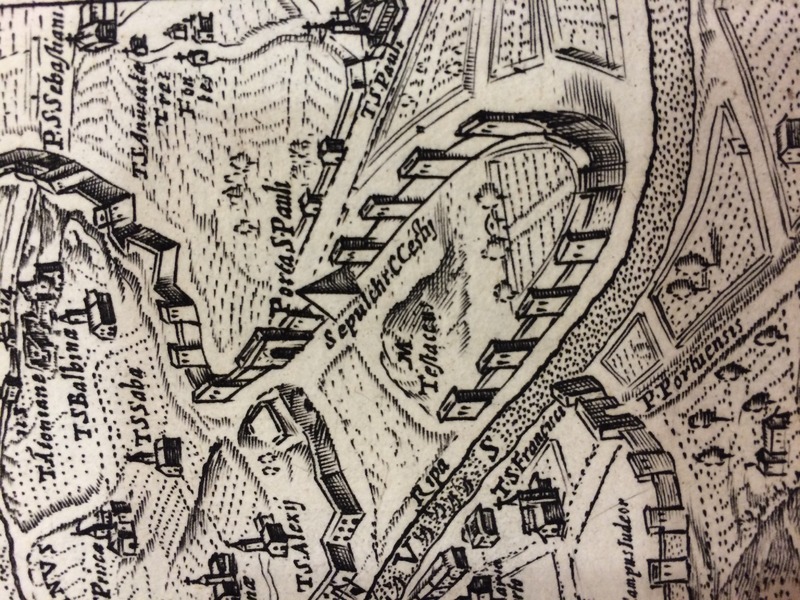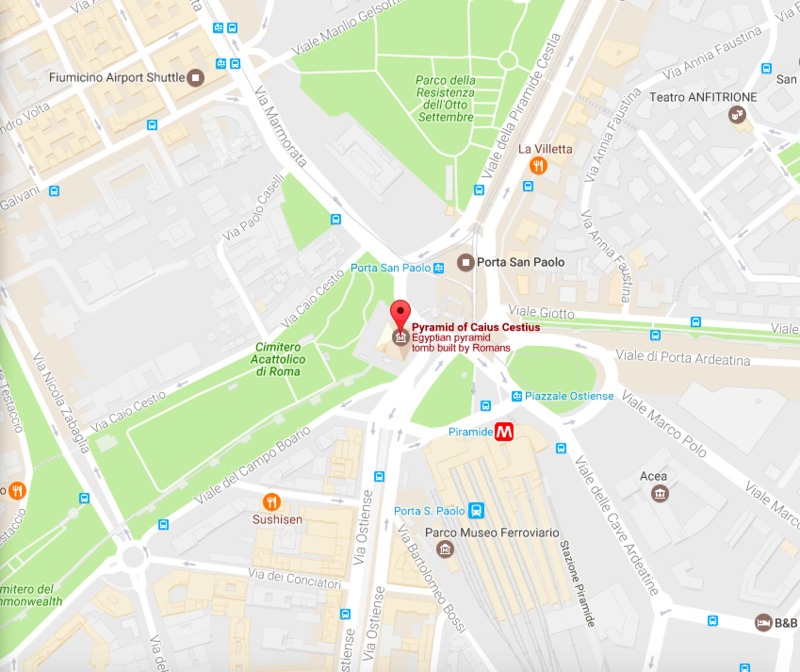Location & Construction

Pyramid of Cestius. Detail, map view. (Photo: Margaret Justus, 2016. Courtesy of Wellesley College Special Collections)
The pyramid, which was completed in a little under a year (330 days), was constructed with materials characteristic of Roman architecture: a travertine foundation and blocks of Italian (Luna) marble veneered over a brick-faced concrete core.1
For hygienic reasons, the construction of tombs within the city was a privilege reserved for a select few emperors. For a non-imperial tomb this area would have been considered a prime location, just outside the city. The heavily-trafficked Via Ostiensis (which lead to the seaport at Ostia) and a smaller street (which led to the Circus Maximus) formed a fork, meaning that viewers could view the pyramid from either street.2 The inscriptions were placed on the northwestern and southeastern faces of the pyramid to maximize visibility from the road.
In 271-5 CE, the Aurelianic Walls and the Porta Ostiensis were built, including the semicircular towers which are still visible today.3 The pyramid was incorporated into the wall. (Today, the Porta Ostiensis is known as the “Porta S. Paolo,” which refers to the church of St. Paul just down the road.4)
______________________________________________________________________________
-
Amanda Claridge, Judith Toms, and Tony Cubberley, Rome: An Oxford Archaeological Guide (Oxford: Oxford University Press, 2010), 399.
-
Molly Swetnam-Burland, Egypt in Italy (Cambridge University Press, 2015), 86.
-
Amanda Claridge, Judith Toms, and Tony Cubberley, Rome: An Oxford Archaeological Guide (Oxford: Oxford University Press, 2010), 397.
- ibid, 397.
